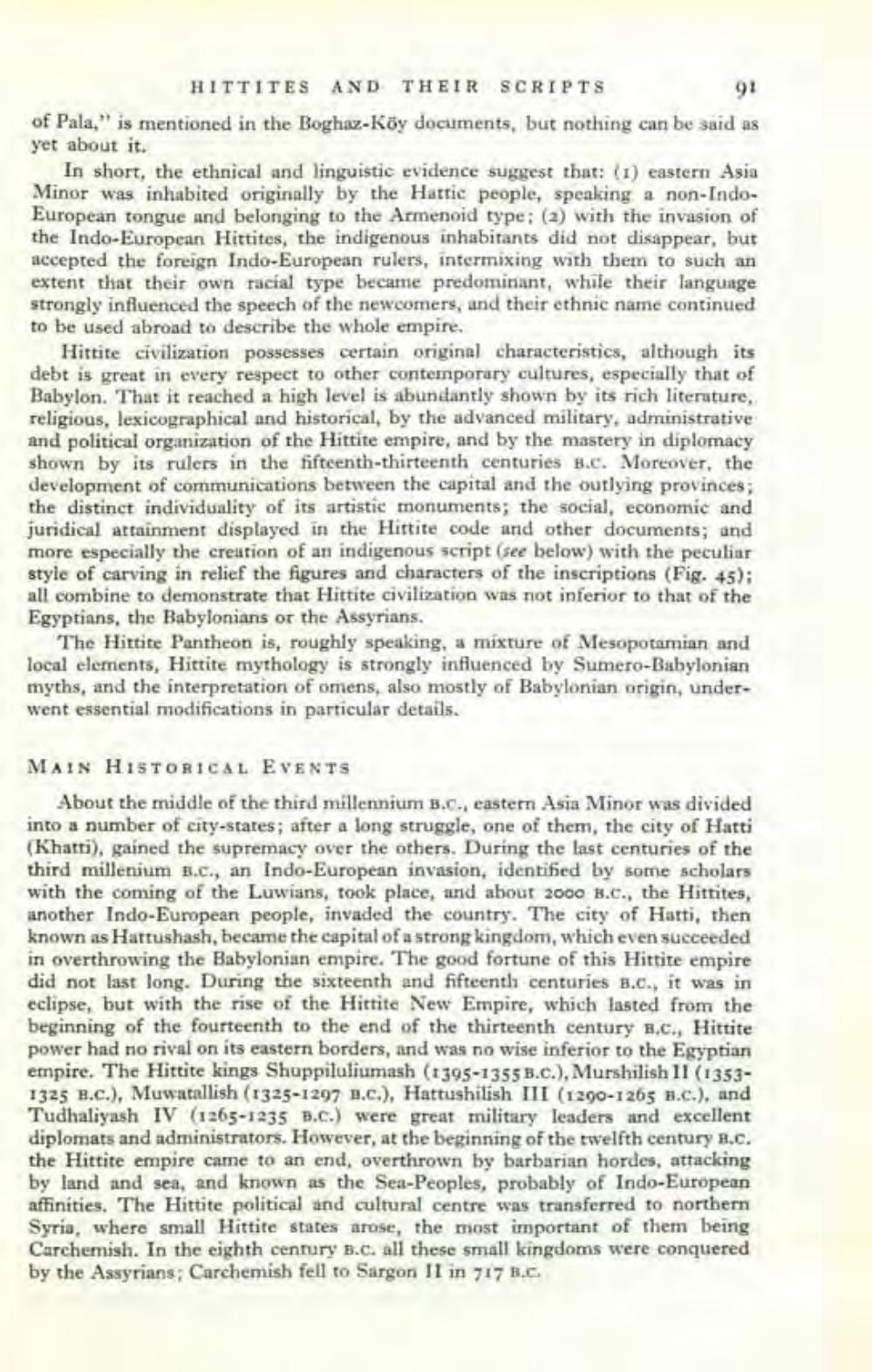________________
HITTITES AND THEIR SCRIPTS
91 of Pala," is mentioned in the Boghaz-Köy documents, but nothing can be said as yet about it.
In short, the ethnical and linguistic evidence suggest that: (1) eastern Asia Minor was inhabited originally by the Hartic people, speaking a non-IndoEuropean tongue and belonging to the Armenoid type; (2) with the invasion of the Indo-European Hittites, the indigenous inhabitants did not disappear, but accepted the foreign Indo-European rulers, intermixing with them to such an extent that their own racial type became predominant, while their language strongly influenced the speech of the newcomers, and their ethnic name continued to be used abroad to describe the whole empire.
Hittite civilization possesses certain original characteristics, although its debt is great in every respect to other contemporary cultures, especially that of Babylon. That it reached a high level is abundantly shown by its rich literature, religious, lexicographical and historical, by the advanced military, administrative and political organization of the Hittite empire, and by the mastery in diplomacy shown by its rulers in the fifteenth-thirteenth centuries B.C. Moreover, the development of communications between the capital and the outlying provinces; the distinct individuality of its artistic monuments; the social, economic and juridical attainment displayed in the Hittite code and other documents; and more especially the creation of an indigenous script (see below) with the peculiar style of carving in relief the figures and characters of the inscriptions (Fig. 45); all combine to demonstrate that Hittite civilization was not inferior to that of the Egyptians, the Babylonians or the Assyrians.
The Hittite Pantheon is, roughly speaking, a mixture of Mesopotamian and local elements, Hittite mythology is strongly influenced by Sumero-Babylonian myths, and the interpretation of omens, also mostly of Babylonian origin, under went essential modifications in particular details.
MAIN HISTORICAL EVENTS
About the middle of the third millennium B.C., eastern Asia Minor was divided into a number of city-states; after a long struggle, one of them, the city of Hatti (Khatti), gained the supremacy over the others. During the last centuries of the third millenium B.C., an Indo-European invasion, identified by some scholars with the coming of the Luwians, took place, and about 2000 B.C., the Hittites, another Indo-European people, invaded the country. The city of Harti, then known as Hattushash, became the capital of a strong kingdom, which even succeeded in overthrowing the Babylonian empire. The good fortune of this Hittite empire did not last long. During the sixteenth and fifteenth centuries B.C., it was in eclipse, but with the rise of the Hittite New Empire, which lasted from the beginning of the fourteenth to the end of the thirteenth century B.C., Hittite power had no rival on its eastern borders, and was no wise inferior to the Egyptian empire. The Hittite kings Shuppiluliumash (1395-1355B.C.), Murshilish 11 (13531325 B.C.), Muwatallish (1325-1297 2.C.), Hattushilish III (1290-1205 1.c.), and Tudhaliyash IV (1265-1235 D.C.) were great military leaders and excellent diplomats and administrators. However, at the beginning of the twelfth century B.C. the Hittite empire came to an end, overthrown by barbarian hordes, attacking by land and sea, and known as the Sea-Peoples, probably of Indo-European affinities. The Hittite political and cultural centre was transferred to northern Syria, where small Hittite states arose, the most important of them being Carchemish. In the eighth century B.C. all these small kingdoms were conquered by the Assyrians; Carchemish fell to Sargon II in 717 R.C.




